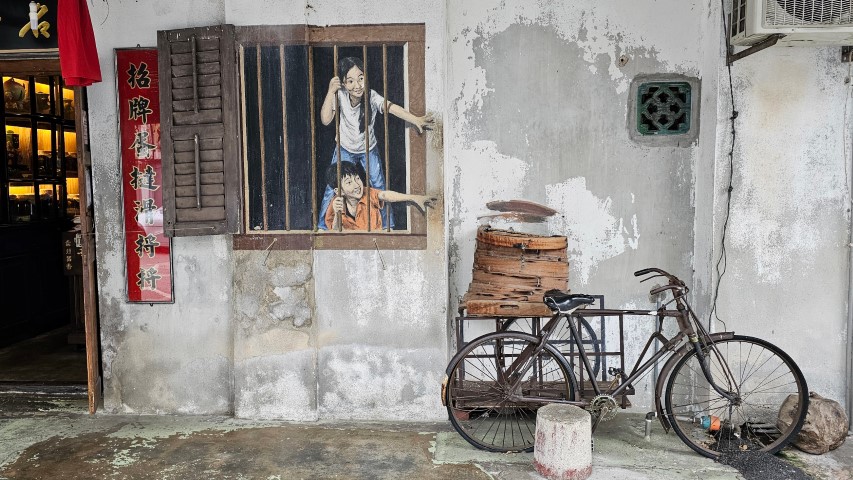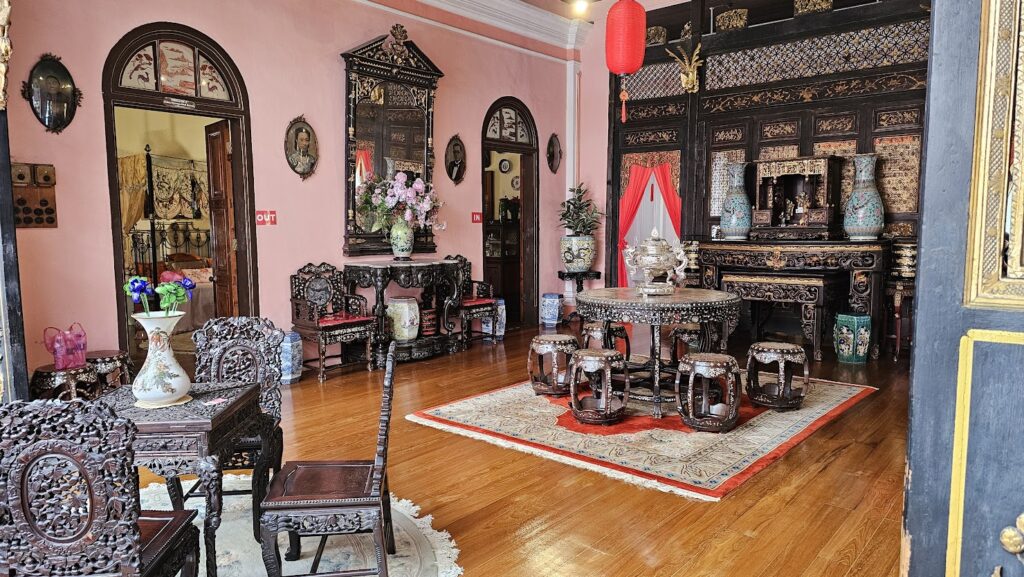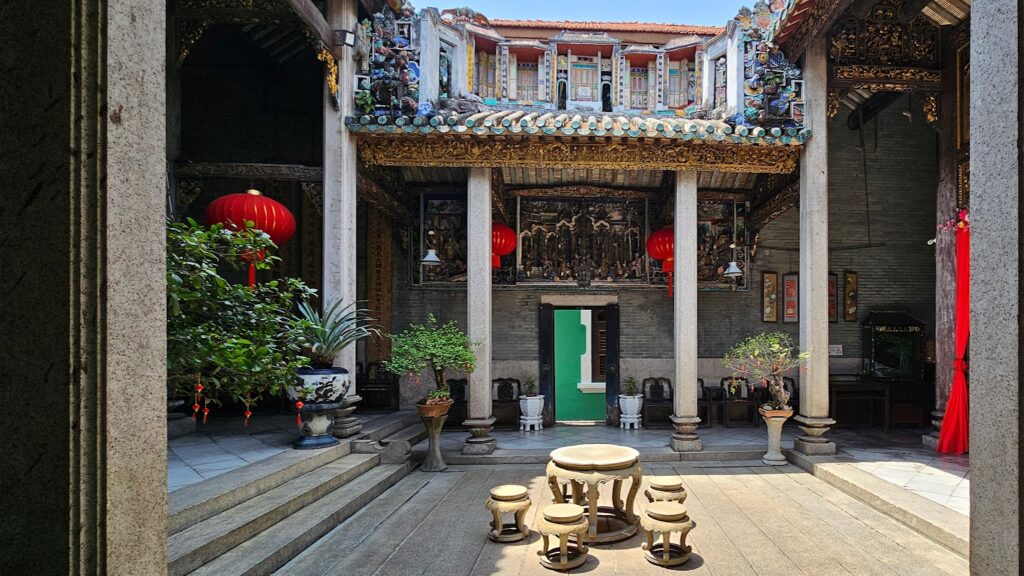
Entrance to a cave temple in Ipoh, about halfway between Kuala Lumpur and Penang, Malaysia’s two biggest cities. Other than looking at limestone, there’s not a lot to do in Ipoh.

The Malay language has absorbed a lot of foreign words, but they tend to be phoenetic. “Restauran” and “Elektrik” were not too hard to figure out.
It’s really is easy to communicate here, compared to any other Asian country I’ve been to except India. Obviously the Brits left their legacy, and English is compulsory up to 6th grade. Seemingly the only ones who don’t know at least a bit of English are the taxi and rideshare drivers, go figure.
The Chinese and Indian folks are generally trilingual, and speak Malay and English, plus either Hokkien or Mandarin Chinese, or Tamil or Hindu for ethnic Indians.
And then there’s Manglish, a combination of English, Malay, Chinese, and Tamil, with the syntax of Chinese, which seems to be widely spoken.

Street art in Penang




Sometimes ya just need a little shade.

A bunch of these metal sculptures around.

Typical street in old George Town, Penang Island.

I did a tour of an old Chinese house from the colonial era, now a museum. Apparently the wealthier ones did quite well for themselves. The culture that arose from Chinese arrivals as far back as 600 years ago is a mix of Chinese and Malay, referred to as Peranakan or Nyonya. There are Chinese restaurants and Nyonya restaurants, and they are not the same.

The blue color in this tiara is from kingfisher feathers.


This is where you would keep your fighting crickets. If you had fighting crickets.

And since even crickets need to breathe, this carved ivory allows the air in.

Here’s a gallery for the ancestor’s spirits (above) to enjoy the opera (below). This arrangement was on both sides of the courtyard, so they could look across.



The less affluent Chinese lived on jetties, one jetty per clan. This kept the riff-raff out of the city, and they were used to unload boats until, well, the boats got bigger than the jetties. I’m told that clan (ie: gang) wars were common until about 20 years ago.



The temple for the Chew clan’s jetty. Quite a contrast with the jetty itself.

Very attractive mosque. Prayer was starting, so I didn’t go in. And really, not a lot of Malays go in either. Compared to the Middle East, the Malay mullahs’ calls to prayer are rather pleasant to listen to.
A note on Islam in Malaysia: The constitution states “Islam is the religion of the Federation; but other religions can be practiced safely and peacefully in all parts of the Federation.” 60% – 75% of Malaysians are Muslim, and the other religions seem to be well tolerated. However, the government, and the population, have been moving toward a more strict interpretation of Islam over the last 20 years, and so headscarves are nearly universal among Malay Muslims. Also, religion is now printed on the national identity cards.
An interesting twist is that the government courts refer all Islamic religious issues to the Sharia courts. And since Malay Sharia does not allow marriage between a Muslim and a non-Muslim, neither will the state. About 25 years ago there was a Muslim woman that wanted to renounce Islam and adopt Christianity in order to get married in the church.
Modern Sharia law does not recognize apostasy, so she had no recourse there. She appealed to the courts to change the religion on her ID card, but they ruled that “a person cannot at one’s whims and fancies renounce or embrace a religion.” Well, that’s interesting.
That issue aside, Islam as it’s practiced in Malaysia is (so far) quite different than in the Middle East.

Roof of a Hindu temple on the beach.
Followup note: The Malays and their language are Austronesian, so they are related to the Pacific Islanders, maritime SE Asians (Indonesia, Malaysia, Vietnam, Cambodia), and the folks all the way over in Madagascar. To me, it sounds nothing like Tagalog or Hawaiian, but that’s why I’m not a linguist. They all are thought to have traveled by sea from Formosa starting 8,000 to 6,000 years ago. So yeah, this sailing stuff isn’t new.
In an interesting parallel, the Dai (Tai) people, who make up the current populations of Laos and parts of Thailand, Myanmar, & Vietnam, are also thought to have passed through Formosa, though probably not later than 3,000 – 2,000 years ago. So what’s with this island that’s so popular?
If you have a couple of minutes, here’s a video. Dessert shop, tea house, and bar, the music was in the back. Way in the back. Way way in the back. Yeah, I should have cleaned my lens.